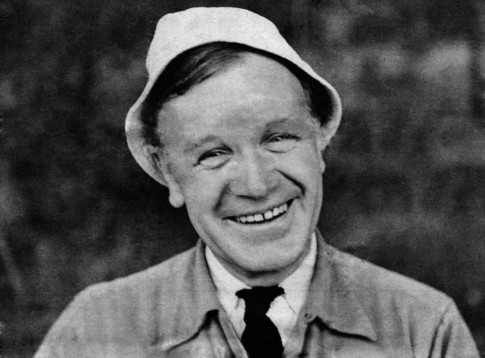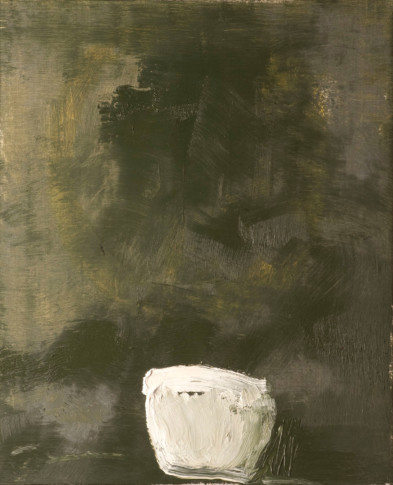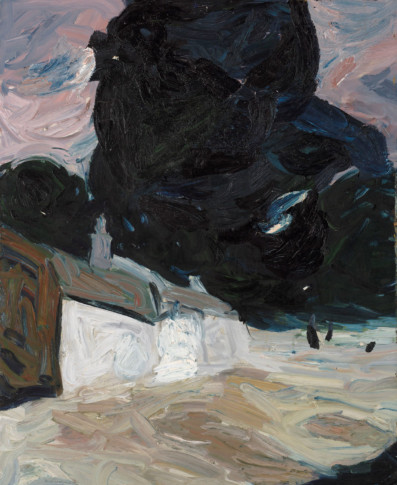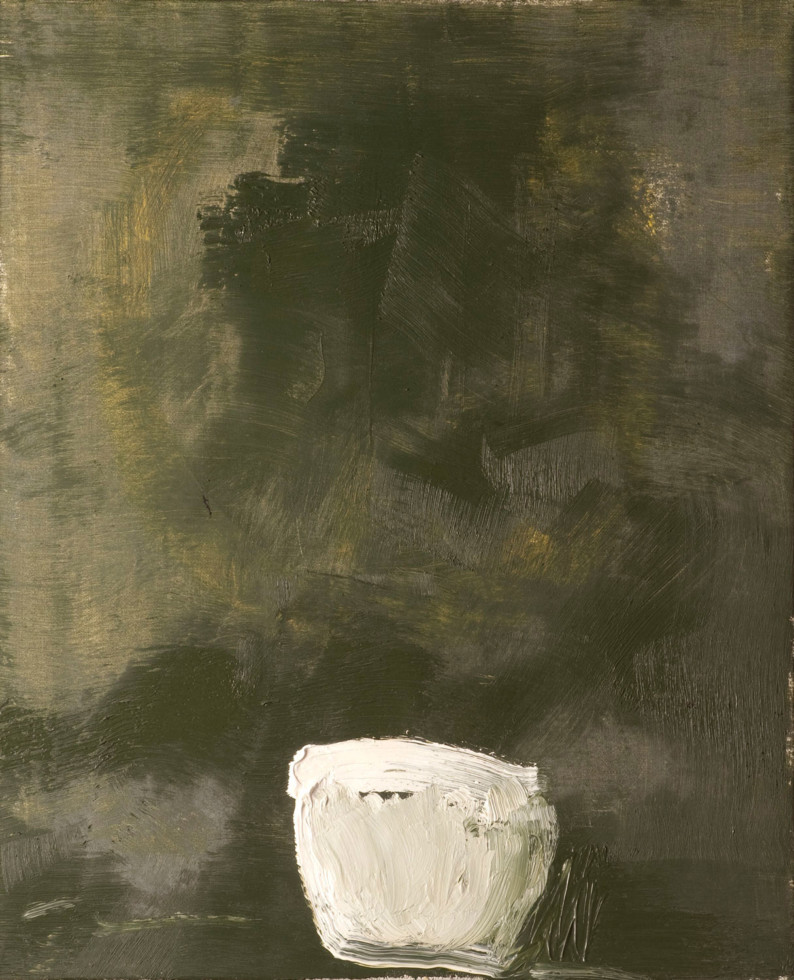
Evert Lundquist, Koppen, 1988 Photo: Prallan Allsten/Moderna Museet © Evert Lundquist
In-Depth Evert Lundquist
Lundquist died in 1994 and the relatively small number of exhibitions that have been mounted in the succeeding years have only served to underline his position as one of the greatest Swedish artists of the twentieth century. And yet on one level his art has since been eclipsed. The lively debate about his artistry and the content of his works fell silent, and it appeared as though Lundquist’s reputation had simply become institutionalised by the continual repetition of a received view. The art world, to the extent that one can refer to it as a homogeneous whole, prioritised other subjects for discussion – once again painting had been declared dead.
The interpretation of an artist should never be allowed to remain fixed in an image which only affirms what we already know. His or her works must continue to be discussed in the light of new experiences and contexts. When it comes to Evert Lundquist, I have long had a sense that there are interesting dimensions to his painting which are worth exploring and studying more closely – dimensions that are not part of the standard view and which can be approached by analysing how his works have been perceived previously and by using the painting itself as the direct source material for new selections and interpretations. Moreover, the position from which we see art today has changed somewhat from his period of greatness. The speed at which we live our lives, while connected to a rapid ow of images and always in continuous flux, makes me feel a fervent need for the unhurried, the mysterious and the specifically individual address of the work of an artist such as Lundquist.
A need that seems to be shared by many others and whose existence is further confirmed by the fact that the eternal battle over painting, without distinctions between figurative, traditional and contemporary forms, has been taken up once again within art.
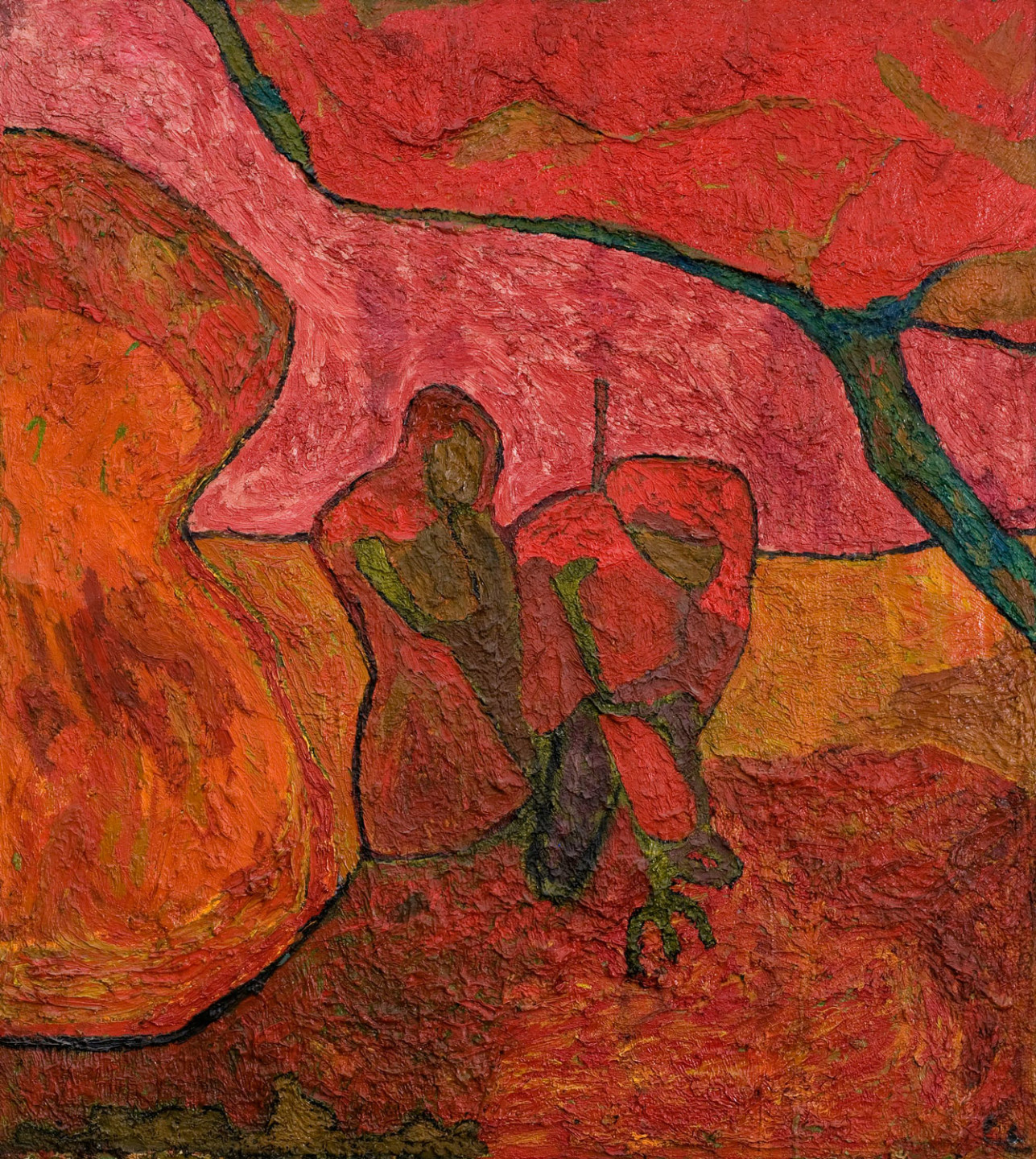
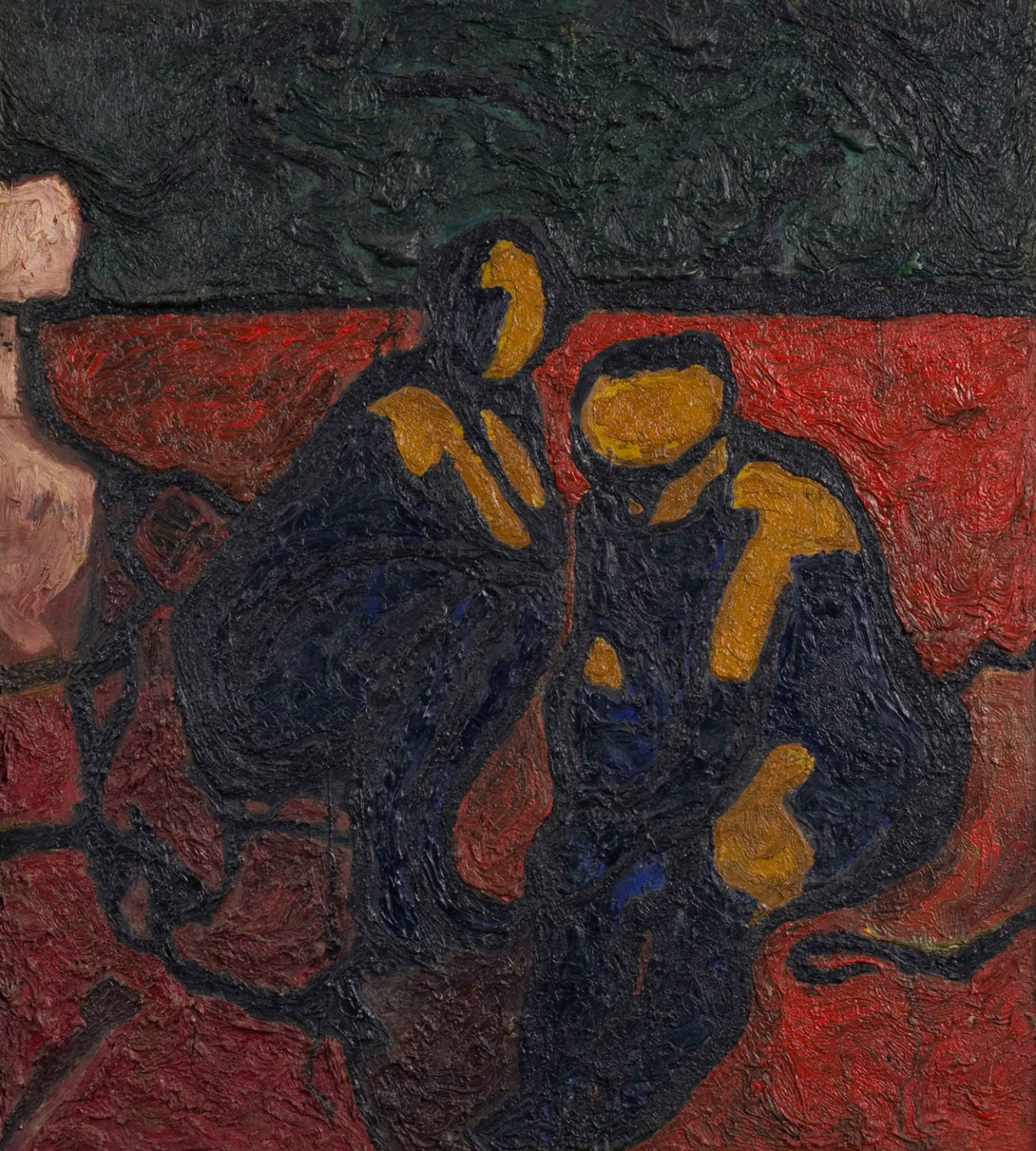
On the Image of the Artist
Evert Lundquist was born in Stockholm on 17 July 1904. With two older siblings, he grew up in a “traditionally middle-class environment that was both comfortably proper and calm”. School, however, was somewhere he felt far from comfortable, and his Swedish education was interrupted in 1921 for a stay at a boarding school outside Dresden. His time spent there would prove important. German society was in a state of dissolution following the war. Lundquist took the opportunity to expand his cultural interests by becoming acquainted with a Germanic tradition of art and ideas. He read Goethe, Kant and Schopenhauer and made frequent visits to theatres and museums alike. During his time in Germany, Lundquist also began to study drawing and in 1924, two years after his return to Stockholm, he commenced his art education at Carl Wilhelmson’s painting school. The following year he was sent on a study trip to Wimereux and Neyrolles in France, where he painted mainly landscapes, and then on to Paris to study at the Académie Julian. When Lundquist won a place at Konsthögskolan (the Royal College of Fine Arts) in Stockholm in the autumn of 1925, Wilhelmsson had just been appointed to the post of professor there.
After the completion of his studies, Evert Lundquist held his first exhibition at Konstnärshuset in 1934 and received a mixed but encouraging reception. Two further exhibitions at Konstnärshuset followed at a fairly leisurely pace (1938 and 1941) before he mounted a retrospective presentation of his work at Konstakademien in 1944, which was considered to be “captivating”, “hard-boiled” and “inaccessible” and “so terribly exclusive that even Kylberg behaved properly”. His ultimate breakthrough had to wait until 1957 and his next exhibition at the same location when the critics described the show as a “magnificent panorama of a career that has been developing over fifteen years and is now at the zenith of its power and expressiveness”, while the Swedish newspaper Expressen printed the headline, “He is a Swedish Champion of Painting.” By now the pace of the exhibitions had picked up noticeably, and the 1960s would see his return to the Royal College of Fine Arts as a professor and a hectic period of international exhibitions. These included prestigious group shows in New York and São Paulo and one-man shows in London, Paris and Chicago.
By now Lundquist was enjoying broad recognition at home in Sweden among both critics and the public. He led a comfortable existence in his studio at Drottningholm outside Stockholm; a doyen of painting, he was a figure who commanded respect, dressed in his suit, with hat and pipe, and was highly regarded by his students. The public image of his working life was that of a career which had arrived at its maturity in linear fashion, developing slowly before ultimately reaching its final form. This Modernist idea of a development towards mastery was further encouraged by Lundquist’s own stories. In these he was equally concerned with talking about his own art and emphasising and cherishing his bourgeois status. There is a vast array of folders – in both the archives of the Nationalmuseum and the Studio Museum in Drottningholm – which contain notes, tape recordings and newspaper clippings about art interspersed with material of a more private nature. The writings on his artworks, sometimes jotted down in haste and at other times meticulously typed out, contain almost maniacal analyses, recurrent attempts at categorising and describing the logic of his own artistic nature. As an example, he divides his artistic career into eleven periods between 1924 and 1957 in what he refers to as a “survey of the periodic nature of the development of the art and of the subsequent breakthrough”. By the 1940s he had already started sketching out the autobiography which would be published in 1984. All this work on his archives, his autobiography and also on his studio (which he donated to the state in 1987 and which is now a museum) is clearly addressed to future researchers and created in order to control his own image. As early as 1945, he was actually criticised in the press by Gustav von Platen for his meticulous recording of “every little shift and change of temperature” in his work and “for being self-involved to the point of narcissism”. Lundquist kept the clipping in his archive and underlined the latter quote, which also spurred him on to a longer addendum of his own in which he declares himself innocent of “any attempt at pursuing a detailed study of my art” and that his notes should not therefore “be judged in accordance with the requirements made of such a study”. He delegates any thorough examination of his work to “be carried out by the experts in art history”. However, a little further along on the same page he cannot refrain from adding, “Should these simple notes be of any assistance in providing an orientation in my work, this overview would then turn out to have been of value.”
Having access to this wealth of biographical material has been rewarding during my investigation, and there is no doubt that Lundquist’s own voice has been much appreciated by his biographers and interpreters. But while working on the archives and amidst all their references to the nature of the object, light, eternity and existence, I could not escape a powerful sense that Lundquist’s authoritarian voice had served to restrict the understanding of his work. The fact that he takes such pains to comment both on his work and on his private life convinces me that he is in fact concealing himself nervously behind a public stage instead of actually revealing anything. The existence of such a hidden side to his character is also suggested by those who knew Lundquist well. Ulf Linde writes in the preface to the second edition of Lundquist’s autobiography (published in 1996, two years after the artist’s death): “That’s right, it’s all true, that’s what he was really like – but… Would he really have painted the way he did if he were the person he recalled in his memoirs? There were other sides to him as well, darker ones, which he suppressed. When I admired the orderliness of his studio, he once commented drily that the discipline was essential – ‘I am totally chaotic after all.’” Torsten Andersson, a professorial colleague at the Royal University College of Fine Arts in the 1960s, goes a step further: “Three quarters of what is written in Sweden about Lundquist is about ‘the comfy-cosy’ image, about the slippers and pipe-smoking; the remaining quarter gets hushed up. The remaining quarter is about an artist breaking away from the norms and conventions of his middle-class life. In Evert Lundquist’s case, this escape would occur at the restaurant table and, fortunately, in the studio as well.”9 But we are told no more than this, so what was Lundquist actually concealing behind that meticulously constructed self-image? There is much to suggest that he used his public role as a cultural figure and a professor to form a buffer against the private difficulties he suffered – in particular against the stressful, if self-imposed form of solitude that characterised his life, and against his feelings, I presume, at not having been a father more closely involved with his family. He and his wife Ebba Reutercrona, also an artist, had twins in 1947 but Lundquist would seem to have been quick to delegate all responsibility to his wife. When not travelling, he preferred to isolate himself in his work. When the twin sons were six years old, the rest of the family moved to a larger residence in Nacka. At the same time, Lundquist was offered a former electricity substation to rent as a studio and home, which he chose to move into that same year even though it meant further isolation from his family. It was not until five years later that the neighbouring building became vacant and the family could be united once again.
In his autobiography, he describes this period as one of “great distances and a couple of visits home between periods of work” and as “oppressive”, “essential” and “wonderful” by turns. Nine years later Hymme, one of his sons, disappeared without a trace on his way to the Gerleborg School in Bohuslän – “A great sorrow, but that is life after all. There are times of light, times of darkness, and of sorrow and of joy” – is the only comment in the notes.10 Manne, the other son, struggled to make his way as a self-taught artist while suffering periods of serious mental illness. Many people have testified to Evert’s own depressions, his predilection for alcohol and the rapid shifts between a warm and compassionate person and an acerbic and unpleasant figure. And yet there is almost no sign of any of this tumult either in Lundquist’s own writings or in the way he is received; the writings are entirely taken up with positive subjects, with his travels and successes. Nowadays, however, it is clear that these aspects can no longer be ignored and that Evert Lundquist’s private and, in parts, wounded nature is present in the artistic work where it forms a contrast to the more traditional and conservative side of his personality. It is only once this insight has been gained, in my view, that getting to grips with his art becomes really interesting and fascinating. For what is really compelling, the vital and affecting aspects of Lundquist’s oeuvre, is everything that transcends, contradicts and complicates any onesided attempt to read his work.
Lundquist’s Art as a Negotiation Between Motif and Painting
One of the views most widely held about Lundquist’s work, besides his being a painter of light, is that his paintings developed in a uniform, almost repetitive, fashion, moving unrelentingly towards a prescribed destination. What becomes clear from even a rapid overview of his oeuvre, however, is that Lundquist was not a consistent, methodical or rational painter. The works change greatly over the years, and this has frustrated my ambition to uncover a consistent approach to the application of the pigment or to the motif. And yet this does not mean that the work as a whole is lacking a centre or a vision. The attention of the viewer has simply to focus instead on the many elements of the paintings which exist in relation to one another and to the challenges, difficulties and relations from which the artist derived energy. It is my view that all of Lundquist’s works are, by and large, made up of a union of opposites, most frequently between what is fixed and monumental on the one hand, and delicate and transient on the other – which calls to mind the image I have become familiar with of his personality. I would go so far as to say that the negotiation between these opposites serves as a kind of engine that drives both sides – as they exist in the various levels of the work – to shift from the motif to the painterly process and back again. Instead of a logical development towards the masterpiece, the history of the oeuvre is thus one of a continuous process of negotiation, not to say conflict, over how the painter with his traditional tools can create a painting that is of relevance on a twodimensional surface while working within a thousand-year-old tradition.
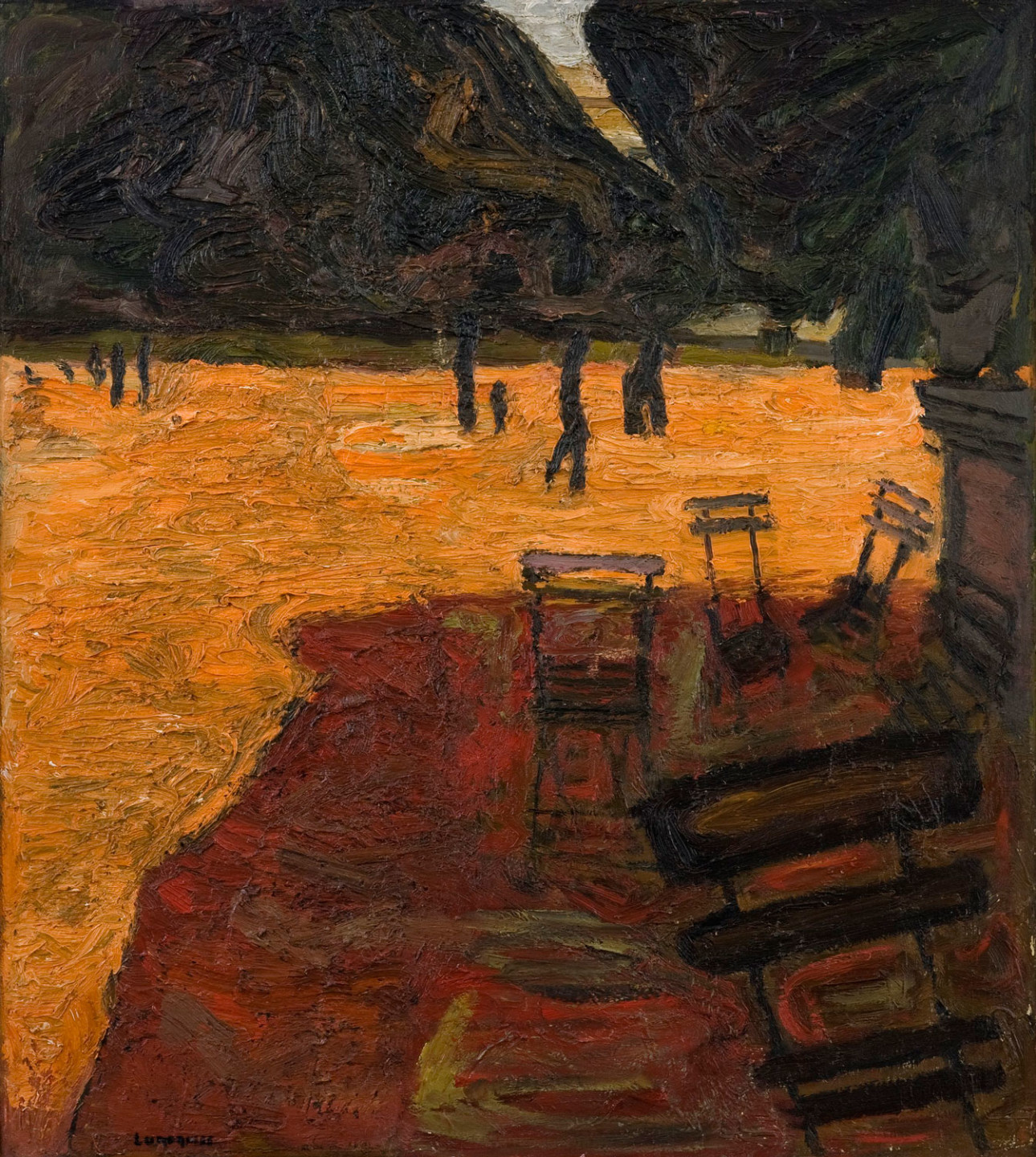
This conflict takes place in the very best works from the early 1930s to 1990. Much has been written about Lundquist’s various motifs and how they are derived from his immediate surroundings. What is also clear, however, is that these motifs would play different roles for him at different points in his career. The first works in which Lundquist finds an individual voice – and these are also the earliest works in the exhibition – have their origins in sketches from a trip to Paris in the spring of 1933. Unlike earlier life-drawings and landscapes from journeys to France, Från Sacré-Cæur (From Sacré-Coeur, 1933) and Jardin du Luxembourg (1933–34), which both formed part of Lundquist’s debut exhibition in 1934 at Konstnärshuset in Stockholm, demonstrate an important move away from the representational. Both paintings have a heavier layer of pigment and contain figurative elements which are not anchored in a depiction of the real places, but serve in the main the particular reality of the painting. The railing in the right part of Från Sacré-Cæur or the relationship between light and shade in Jardin du Luxembourg provide examples of this. The majority of the clearly visible brushstrokes on these canvases also appear “irrational” in relation to their subject matter, as though applied to describe themselves. This is a feature that is developed further in several paintings from the same period. The unrestrained way in which the material is treated in Kvinna vid den vita muren (Woman by the White Wall, 1935), for example, is describing something quite different from the mortar in the construction. It conflicts instead with the conventional motif and undercuts both a sense of uniformity in the work and the possibility of simple interpretations.12 But even if it is the process of painting in these works that has gained ground over what is “depicted”, the motifs, such as the impressions from the Sacré- Coeur, clearly remain their starting-points. This is both less certain and more ambiguous in paintings such as Skörden (The Harvest, 1938) and Vågen I (The Wave I, 1940). In these works, it is the surfaces and the traces of Lundquist’s activities on the canvas that have gained further ground in relation to the subject matter, which has been radically simplified. Foreground and background coalesce here to form an almost monochrome surface, and there is actually very little to help the motif “emerge” from the pigment. A few simple contour lines and some slight changes in the palette are the scant means used to make visible the figures and provide the paintings with their feeling of monumental linearity. A change in the relationship between the feverish work on the canvas and the role of the motif in the painting is becoming ever more evident. Instead of the impression left by a particular environment coming alive via the brush, it is the emergence from the material of bodies, at once both distinct and delicate, that contributes to that powerfully painful sense of an existence imprisoned in an almost architectural introversion.
In these early works from the 1930s and 1940s, Lundquist would build up the pigment in layers of equal thickness from side to side, so to speak. Beginning in the 1950s he switched instead to working with deeper, inward movements, by piling layer upon layer, and this would also have consequences for the figuration.13 Based on this alteration in the manner of painting, it is my view that what had emerged in terms of the relationship between the motif and the impasto pigment in the 1930s and 1940s had been entirely transferred to the process of painting itself after 1949. As a consequence of the slowness of the work and the degree of over-painting, the particular history of the paintings can be clearly deciphered in the structure of the later works which we are able to approach in an almost archaeological manner. (Lundquist deliberately allows the earlier layers to show and these are frequently clearly visible at the edges of the work.) In combination with the earthiness of colours and material, this is primarily what the paintings from this period “are about”. The motifs themselves simply constitute the topmost layer and often float above the paintings, concealing what lies beneath. It could be said in consequence that an absolute cleavage had arisen between the motifs and the application of the pigment and that Lundquist had severed all ties with his earlier manner of painting – no longer serving as the starting point for a painting, the motif is now assigned “the task” of completing the painting and of bringing together the aspects of the process that are so divisive and refractory. But despite the major differences in appearance between the earliest paintings and the works produced in the 1950s, fundamental similarities between these periods of the oeuvre can still be found, particularly in the manner in which the relationship between motif and painting is challenged; what occurs in the painting is simply shifted from one side to the other. This allows us to compare the feeling of fragile, existential pain when confronted with a painting such as Vågen I with the self-critical aspect (one of continual regret) of the working process in Fåglarna (The Birds, 1950) or Sandtaget (The Sandpit, 1955). In the 1970s and 1980s, a further change makes itself felt which heralds a return to a more integrated relationship between painting and subject matter; Yxan (The Axe, 1974) may serve as one of the most forceful examples in this regard while Koppen (The Cup, 1988) demonstrates what Lundquist could achieve when he had almost entirely lost his sight and was forced to change the pace of his working process. He was no longer able to return to a canvas on which work had begun but had to complete his paintings at a single session.
The Collision Between the Radically Complicated and the Archetypically Simple
As we have seen, Lundquist clearly had a particular love for painting as a form of artistic expression and was keen to experiment with its various possibilities. He tested new methods and cast a caustic eye on his own works – a process which formed a crucial element of the creative process – particularly during the years from 1949 to 1980. Pupils of Lundquist have testified to how, in the course of visits to the studio, he would always find something interesting in the students’ work; together they would identify a point or an area in a painting from which the student could then continue working, perhaps even altering the entire work: just as was often the case when it came to his own work. We also know that several of Lundquist’s paintings were exhibited in different ways. Torso (1961), for example, has been hung both horizontally (then with the title Stilleben) and, as now, vertically. He was keen to introduce into his practice random elements of this kind which he was incapable of evoking on his own through painting. Just like Jackson Pollock, whose catalogues and books lay scattered around the studio, Lundquist was also an evidently physical painter, an artist who responded to his own painting and liked the way the movements of his body left traces and residue on the surface. This also goes hand in hand with the enthusiasm for working with thickly-applied layers of rich pigment, a sort of sludge which meant that he, who was normally so proper and controlled, would get thoroughly covered in the same muck as his studio. There are anecdotes about his buying ordinary wall paint in cans that he would pour out onto newspaper which absorbed the liquid, so creating a greater density in the mass of pigment. Conventional oil paint in the quantity he required would have been too expensive.
The fact that Lundquist liked radicalness, openness, contrariness and ambivalence in his paintings and that he was titillated by these qualities and by playing with the pigment during the painting process when alone in the studio may be understood as a way of acting out that he could not permit himself in “real life”. Outside the studio he was not willing to risk even the suggestion that he was at the mercy of his feelings, that he was split and not fully in control. And no matter how open and abstract the paintings became during the creative process, he could not, as everyone knows, ever complete them without adding a motif and a title that, for himself at least, locked their meaning in place. After his outbursts at the canvas, and this applied equally to his visits to restaurants, it was as though he needed to reclaim his self-image, to ensure it was how he wanted to present it. In my view, it is this opposition in his temperament that gave rise to the fascinating contrast between the unrestrained treatment of the material and the archetypally simple motifs in many of the paintings of the 1950s, such as Pottery, Number 9 (1949) or Potatiskrukan (The Potato Pot, 1955). On one level, the motifs could be said to have served as an alibi for Lundquist and for his being able to permit himself an uninhibited form of painting, as a fixed point that was “at once both skeleton and legitimation”, as Per Kirkeby puts it in this volume. But if this interpretation is accepted, what further significance should the motifs – all those everyday objects – be assigned, if any at all? Could it have been an aspect of this very conflict between the complex and the almost banal – a conflict Lundquist liked so much and which was so characteristic of him – that meant the paintings were never allowed to become completely radical; a process that would have involved going along with the impulses of the studio without inhibition. And yet at the same time the paintings never turn into really classical and conventional still lifes. That would be the simplest conclusion, and that the motifs themselves lacked any great significance for him. That everything of consequence occurs in the particular relationship between painting and subject matter, in the movement from the radically complex towards simplicity and the subduing of the paint by the subject matter. This is to some extent also substantiated by Lundquist himself, who in several of his notes said he was not interested in symbolism. It may be objected nevertheless that if the motifs did not convey any meaning of their own, he could simply have painted anything at all. And even if there are those who maintain that this was exactly what he was doing with his everyday objects, it would appear impossible to resist the challenge posed by searching for a further layer of meaning within them. The most readily available explanation is that the isolation to which he exposes his motifs lies too close to Lundquist’s own isolation, to his own self-imposed solitude and melancholy destiny, to be ignored. Interpreting the objects as self-portraits may be going too far but it is possible to imagine that they describe a way of relating to the world. The artist moves the surrounding world into his own space in small, manageable pieces – each one on its own and separate from the others. The everyday world and its objects can be said to represent a limitation that no doubt provided him with a form of security. This interpretation of the artist’s relationship to his subjects finds a measure of support when the backgrounds to the motifs are studied. Inasmuch as it is possible to describe them in terms other than as surfaces of dense and often heavy colour, they are very dark and constricted spatialities. Distances are short, objects and background are barely separated, see Den skära säcken (The Pink Bag, 1953) and Torso for examples. This radical way of pruning the pictorial space can be traced all the way back to the earliest paintings. Kvinna vid den vita muren, Kyrkomuren (The Church Wall, 1935) and Från Sacré-Coeur all contain elements that block the viewer’s gaze. In the first two works, the walls are placed in a central position and obstruct any journey into a conventional depth, while the lamppost that has ended up in the middle of the Paris picture works in the same way. Considered from this perspective, it becomes evident that the role the motifs play in the paintings of the 1930s (to hide, cover, obstruct) is also a recurrent feature of works painted later on in the artist’s career. The radically new form of painting of the 1950s becomes – while possibly unconscious – a new way of projecting the same problem areas he was preoccupied by in the beginning. While it is supposition that all these abbreviated distances and hidden rooms are describing a constricted and almost claustrophobic existence – identical with that of the artist – this is not a particularly wild guess. There are instances of Lundquist working in a more overt way on portraits of his own room. One example is Ateljéinteriör (Studio Interior, 1948), one of his darker paintings, depicting an empty easel which most closely resembles a pitiful, charred remnant. Ateljédörren II (The Studio Door II, 1974) is another painting whose motif is his own room. This space too is dark, although with a bright centre to the painting, representing a door opening onto a park. The viewer’s gaze is released through this door into the open air, a shimmering and alluring world markedly different from that dark and anxiety-laden atmosphere of the studio space. The place he would all but merge with over sixty years.
The Foundation for New Experiences
One of the most powerful impressions left after reading the existing literature on Evert Lundquist is that his art has been seen as transcending the individual while at the same time he is considered to have developed into an interpreter of the “sound practice of art” and of the classical and eternal values. Rolf Söderberg writes on the very first page of his survey of the artist: “Self-analysis of a psychological kind is barely noticeable. But this absence of analysis is not a callow shortcoming. We are dealing here after all with an artist for whom psychologising never had any significance.” This is a statement I find perplexing when considering Lundquist’s work and while reading his notes some fifty years later. The impressions gained from them have convinced me rather that what is really interesting and affecting about his art, what is indeed its common denominator, is to be found in the traces of the personal and of the individual that sixty years of solitary struggle with a two-dimensional surface in the studio did indeed leave behind. Both the “immediate” physical, exploratory and experimental painting and its topmost “concealing” layer lead us to suspect the existence of a real person behind the paintings.
Söderberg’s statement can of course be explained as being based on the artist’s own view of himself. As we have seen, Lundquist succeeded in emphasising the archetypal, classical and brighter aspects of his art, probably to divert attention from his own person. It is as though he were attempting to provide a protective wrapping for his works. The goal of this exhibition has not been to turn upside down in a reckless and inconsiderate fashion any pre-existing image or to alter that history which is based to such considerable degree on “the horse’s mouth”. But what I have sought to do is unwrap the protective covers and peel away the layers of institutionalised interpretation and what has simply been accepted without question. It has, in consequence, become both a symbolic and an aesthetic act to release the paintings included in the exhibition from gilt frames that are often heavily charged with a powerful identity of their own and which formed part of the classically bourgeois stage-set Lundquist used to highlight his works. The idea has been to supplement the image of his work by focusing on the paintings themselves – and on a selection of works in which, in my view, Lundquist is moving forward and engaging directly with the difficulties instead of abandoning himself to his own virtuosity. It is the ambivalence as I see it, the openness and contradictory nature of his art, which creates that sense of friction which makes the best paintings completely electrifying. Taken together these factors create a paradox that is at once direct and elusive. These aspects are ones which arise in a fundamental sense out of a combination of curiosity, personal experience and flexibility when dealing with the transient and also out of the complex admixture of what is at once a powerful need to express and an essential emotional control. What emerges from regarding the work in this light is an artist who would serve as an inspiration for Per Kirkeby, Georg Baselitz and Andreas Eriksson rather than a successor to Chardin and Rembrandt.
I do not believe, however, that there is only one way of looking at Lundquist’s art, but many. I hope that the exhibition will make room for several voices and for new experiences. I have made room here for a number of new voices of this kind who have not written about Lundquist before. Jeremy Lewison’s article tackles Lundquist’s work more penetratingly from an international perspective than ever before and Katarina Wadstein-MacLeod shares with the reader her view of how Lundquist’s paintings and his motifs can be interpreted. Our artist colleagues Torsten Andersson, Georg Baselitz, Andreas Eriksson, Per Kirkeby and Sigrid Sandström have added their personal reflections to increase the diversity of this volume. All these texts contribute vital elements in the process of making accessible an artistic oeuvre that has not been sufficiently examined in recent years.

